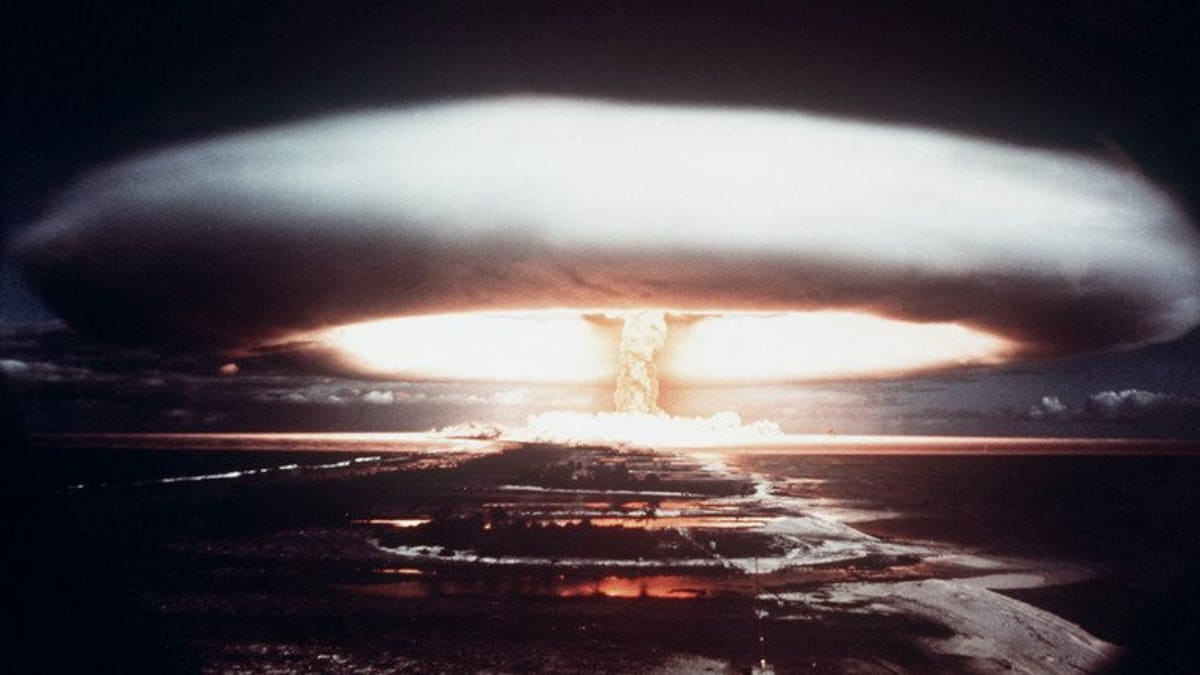
Picture taken in 1971, showing a nuclear explosion in Mururoa atoll. The US Air Force came dramatically close to detonating a huge atomic bomb over North Carolina in 1961, according to a newly declassified document published by Britain's Guardian newspaper on Saturday. (AFP/File)
LONDON (AFP) – The US Air Force came dramatically close to detonating a huge atomic bomb over North Carolina in 1961, according to a newly declassified document published by Britain's Guardian newspaper on Saturday.
Two hydrogen bombs were accidentally dropped over the city of Goldsboro, North Carolina on January 23, 1961 when the B-52 plane carrying them broke up in mid-air, according to the file.
One of the bombs began to detonate -- a single switch was all that stopped it from doing so. The three other safety mechanisms designed to prevent an unintended detonation failed.
The US government has acknowledged the accident before, but the 1969 document is the first confirmation of how close the United States came to nuclear catastrophe on that day.
"It would have been bad news in spades," wrote its author, US government scientist Parker F. Jones.
The bomb was 260 times more powerful than the one that devastated Hiroshima in 1945, according to the Guardian.
The accident happened at the height of the Cold War between the United States and the Soviet Union.
The declassified report was obtained by US investigative journalist Eric Schlosser under freedom of information legislation.
"The US government has consistently tried to withhold information from the American people in order to prevent questions being asked about our nuclear weapons policy," said Schlosser.
"We were told there was no possibility of these weapons accidentally detonating, yet here's one that very nearly did."
Jones jokingly titled the report "Goldsboro Revisited, or: How I Learned To Mistrust the H-Bomb", a reference to Stanley Kubrick's classic 1964 film about nuclear armageddon, "Dr Strangelove or: How I Learned to Stop Worrying and Love the Bomb".
